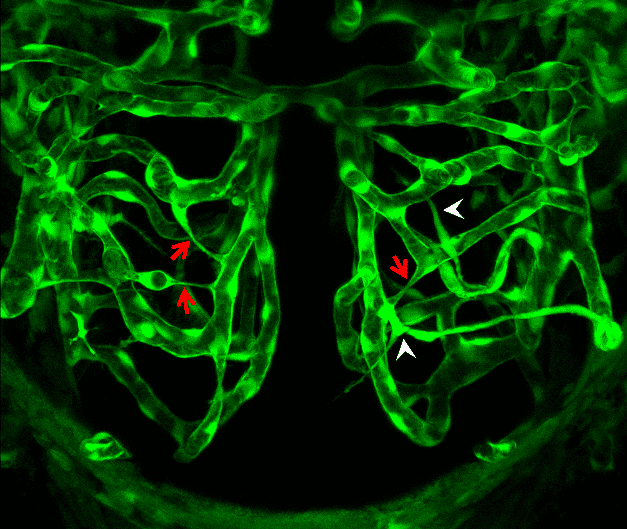Piece of Mind Is Overrated
Compartmentalization is redirecting your focus away from thoughts or experiences that are disturbing in order to create space for something else. That’s not always a bad thing. The ability to leave stress at work. Setting emotions aside when navigating a dangerous situation. There are countless reasons.
We all have blocked certain thoughts and experiences from our immediate awareness. We may do this intentionally. Or it may be inadvertent due to the distractions of the day leading us to push worries to the back of our minds. This is often adaptive; it frees us from overbearing stress. We create mental partitions to help prevent overload and it frees our minds to concentrate on different things.
When we “put something out of our minds” we are intentionally setting aside that feeling or experience. When we need to move away from something that is upsetting or overwhelming, we may engage in escapism. Engaging in an activity to distract and distance ourselves from stress provides a recess from our troubles. There are many temporary escapes that are harmless and help reset our psychological stability. Taking a walk, reading a book, working out at the gym, or playing a computer game are all ways to take a time-out.

However, escapism has a tendency to creep into an ever-increasing portion of our lives. In some instances can evolve from a harmless distraction to completely hijacking our existence. Certain escapes come at a cost and gradually take on a problematic life of their own. Excessive online gaming, drinking/drug use, gambling, sexual encounters, etc., can damage relationships and interfere with our ability to meet obligations and achieve goals.
Compartmentalism: The Art of Disconnection
The alcoholic/addict has certainly become an expert in temporarily hiding from all that matters. Most of us (but not all) still have one foot in the world of relationships and responsibilities and the other in the world of escapism. But all of us have created a wall separating ourselves from what anchors us, a barrier that allows us to forget the things we care deeply about.
In order to create our escapist alter-ego, we cut the connections to ordinary life. Alcoholics certainly possess no monopoly on bad behavior in this regard and have some very distinguished company. Some may ask, how is it that someone who is not suffering from an addiction, who has a career, meaningful relationships, and who values family and friends, behave in ways that are completely opposed their own values and convictions? How can people be so self-destructive? Yet there are many examples throughout history and literature of people acting in ways contrary to their stated beliefs and values.
It is our ability to compartmentalize, this human ability to disconnect from and mentally separate our values and commitments, that makes is possible for us to behave in such destructive ways. We cut free from the obligations of love, friendship, of being helpful and being helped, of consideration and being considered. In order to flip our escape switch on, we must flip our reality switch off. And the compulsion to escape, to once again experience the illusion of freedom, is itself a prison.
The mind is a master at creating compartments, but it’s up to us to make sure they don’t become prisons. –Hannibal Lector
Reengaging Often Requires Further Compartmentalization
But once we leave our secret escapist world and reenter the reality of relationships and commitments, we may find it necessary to segregate ourselves from the escape that just occurred. We may need to separate ourselves from feelings of guilt, shame and sadness that may be experienced when we must confront the consequences of our actions (or lack of actions). Once back in reality we attempt to reconnect with our beliefs and values while ignoring the violation of those values that just occurred.
“You want answers? (‘I want the truth!’)
You can’t handle the truth!”
–Colonel Jessup (Jack Nicholson), “A Few Good Men”

Compartmentalization Separates Realities
Maladaptive compartmentalization serves the purpose of keeping secretive and non-secretive realities separate. To accomplish this, an internal quarantine of the secretive reality has to occur. These partitions between the secret self and the reality-based self sever our inner thoughts, feelings, and experiences both from one another and from external events. When compartmentalization is used to enable escapism it is because our behavior is incompatible with our life. The life we have created for ourselves and how we perceive ourselves do not jibe with our actions. These incompatible experiences can not coexist simultaneously in our consciousness without causing great psychological discomfort.
When the realities of life and the consequences of our actions eventually penetrate the walls of compartmentalization, the escapist reality is changed and can collapse. During a collapse, the segregated feelings of guilt, shame, fear, self-loathing, etc., come pouring out uncontrollably and are often overwhelming.
Alcohol and Drugs Eventually Quit Working
Alcoholics and addicts rely on substances to keep the walls from cracking. But sooner or later, living this way catches up to us. Alcoholics often describe this experience as “the alcohol quit working” and explain that “no matter how much I drank I couldn’t find peace” combined with an inability to “drink away feelings.” Addict or not, toxic compartmentalization is simply not sustainable. Once we accept this, we can begin to move forward in one piece and heal.
Compartmentalization leads to a fracturing of the soul and the toll is significant. For many, the ability to destructively compartmentalize began during a painful childhood. Family secrets, neglect, and abuse made escapism an attractive, and sometimes very necessary, solution. Our addictions are but one manifestation of this tendency toward avoidance and/or denial of our experiences. For victims of trauma addictions continue to be fed by unacknowledged and unhealed wounds. Trauma-based compartmentalization may be part of a larger system of psychological defenses against overwhelming fear and pain.
But not all compartmentalization is trauma-based. Learning to understand what lies at the root of our need for escapism and destructive behavior is key to regaining wholeness. But first the walls of compartmentalization need to be torn down. Here are some ways to proceed:
Ending Compartmentalization: Start To Proceed In One Piece
- Reflect on, write about, and talk to people you trust about areas where you compartmentalize. Make an effort to know yourself better.
- Identify situations and underlying emotions associated with compartmentalization. Pay attention to the emotions created by certain situations. Are they conflicting? Do you have values you are ignoring?
- Practice introspection and self-reflection. Take time to journal about your thought processes and emotions as you move forward.
“We feel free when we escape – even if it be but from the frying pan to the frier.” –Eric Hoffer
- Be kind to yourself- Keep in mind compartmentalization served a self-protective purpose and accept it will take time and be challenging to integrate your experiences and emotions.
- Embrace the experience of integration fully, allowing yourself accept and integrate conflicting emotions and experiences. Allow yourself to experience and process the emotions fully. This may involve mindfulness meditation and emotional self-regulation techniques such as deep breathing, progressive muscle relaxation, etc.
“As memory may be a paradise from which we cannot be driven, it may also be a hell from which we cannot escape.” –John Lancaster Spalding
- Write your story- Create a personal narrative as you progress to create a cohesive chronicle that aligns with your values and beliefs. This includes acknowledging areas of your life where you veered away from your values, and describing the situations, emotions, and thought processes that were predominant at the time.
- Practice open communication. Foster open and honest communication in your relationships. Share your thoughts, feelings, and experiences with trusted individuals who can provide support and understanding. Creating connection reduces the compulsion to compartmentalize.
Author’s Note: This post is a simplified adaptation of the masterful exposé by Richard Nicastro, PhD entitled “The Dark Side of Compartmentalization”. You can read the original essay here.
